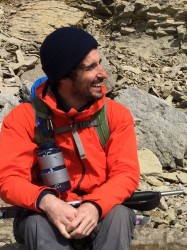BibTex format
@article{Brazeau:2020:10.1038/s41559-020-01290-2,
author = {Brazeau, MD and Giles, S and Dearden, RP and Jerve, A and Ariunchimeg, Y and Zorig, E and Sansom, R and Guillerme, T and Castiello, M},
doi = {10.1038/s41559-020-01290-2},
journal = {Nature Ecology and Evolution},
pages = {1477--1484},
title = {Endochondral bone in an early devonian ‘placoderm’ from Mongolia},
url = {http://dx.doi.org/10.1038/s41559-020-01290-2},
volume = {4},
year = {2020}
}

